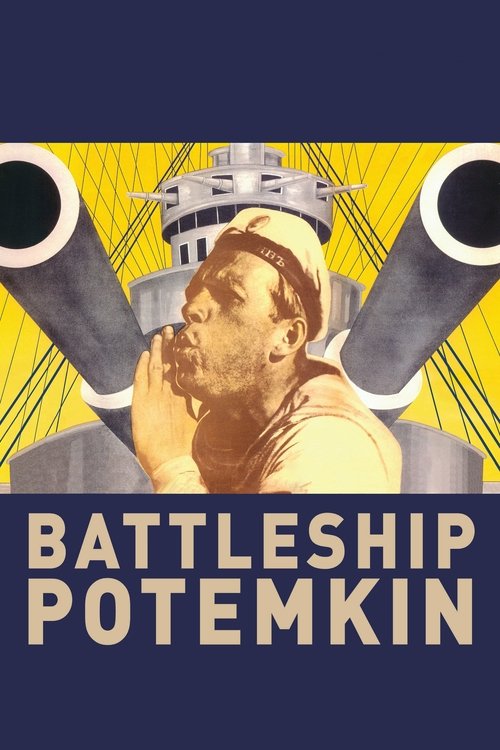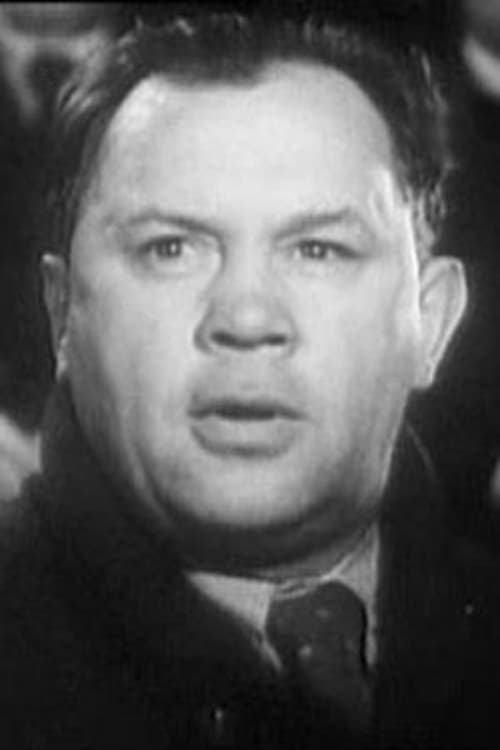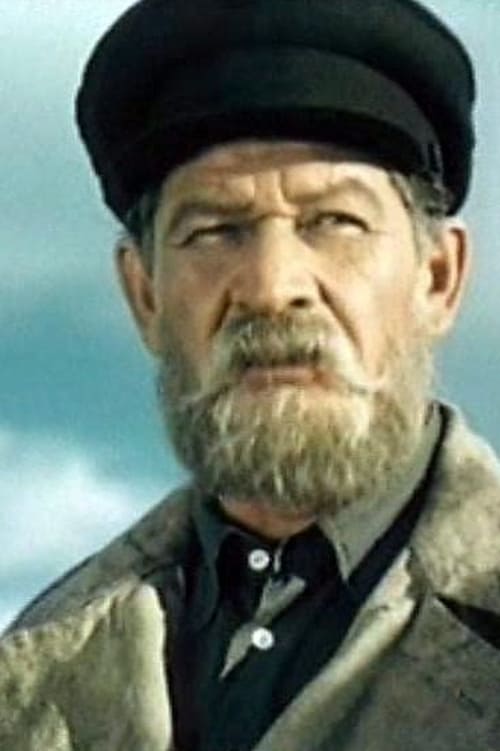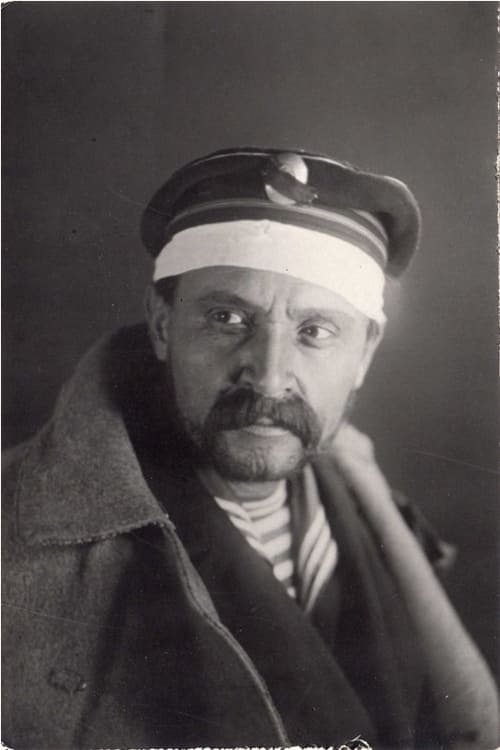
Battleship Potemkin
A dramatized account of a great Russian naval mutiny and a resultant public demonstration, showing support, which brought on a police massacre. The film had an incredible impact on the development of cinema and is a masterful example of montage editing.
Dialogues from Movie Battleship Potemkin
Quotes from Movie Battleship Potemkin
Memorable Scenes from Movie Battleship Potemkin
The Mutiny
The crew of the Battleship Potemkin, fed up with inhumane treatment and terrible conditions, revolts against their officers. The scene captures their anger and desperation as they confront authority. The tension peaks with the chant of 'Down with the Tsar!' as they rise against oppression, leading to a powerful moment of unity among the sailors. This rebellion becomes the catalyst for the film's narrative, showcasing the fight against tyranny. After the mutiny, the ship transforms into a symbol of revolution, and the sailors find solidarity amidst chaos. The audience feels a surge of hope and empowerment as the oppressed fight back.
Context: This moment represents the beginning of the revolution, showcasing struggles with authority and setting up the entire narrative of uprising against oppression.
The Death of Vakulinchuk
After the mutiny, the ship's doctor appeals to the crew to embrace humanity and fight for justice. When the beloved sailor Vakulinchuk is shot while leading the revolt, his death serves as a significant emotional turning point. The somber mood is highlighted by the close-up of Vakulinchuk’s lifeless body as the crew mourns, creating a poignant image of loss. This moment galvanizes the men on the ship, spurring them to continue their fight against the oppressive regime. The audience feels heartbreak and rage, connecting deeply with the sailors' sense of loss and determination.
Context: This scene emphasizes the personal cost of rebellion and solidifies Vakulinchuk as a martyr for the cause, bringing deeper context to the theme of sacrifice.
The Odessa Steps
In this iconic scene, as the citizens of Odessa gather to support the mutineers, the Cossacks brutally suppress the crowd. The infamous steps become the backdrop for chaos and violence as soldiers fire on innocent men, women, and children. The cinematography captures the horror of the massacre—the slow-motion shots and juxtaposed close-ups of the fleeing crowd against the calm, deadly resolve of the soldiers speak volumes. This pivotal scene cements the tension between the oppressed and the oppressor, leaving a haunting impression on viewers. Feelings of shock and empathy flood through the audience as they witness the senseless brutality.
Context: Often seen as one of the greatest scenes in film history, it illustrates the brutal reality of oppression and highlights the film's central message against tyranny.
The Mother with the Cradle
Amidst the chaos on the Odessa Steps, a mother desperately tries to shield her baby as soldiers surge forward. The image of a mother protecting her child amidst gunfire becomes a powerful representation of innocent lives caught in the crossfire. As the soldiers advance, the emotional weight of her fear and protectiveness is palpable. This moment’s intensity amplifies the tragic consequences of the societal conflict, evoking deep sympathy and heartbreak. The audience feels a profound sadness and anger watching the devastation of innocent families caught in turmoil.
Context: This moment humanizes the conflict, allowing viewers to relate on a personal level, emphasizing the broader impact of political brutality on everyday life.
The Arrival at Sevastopol
After the tragic events in Odessa, the Potemkin arrives in Sevastopol, where they are met with cheers and unity from the townspeople. The contrast between the joy of the citizens and the sorrow from Odessa captures the resilience of hope amidst despair. This sequence illustrates the solidarity emerging among the different classes against their common oppressor. The triumph of this moment offers a sense of redemption and promise. The viewers feel uplifted and inspired, reflecting on the power of collective action against tyranny.
Context: This scene highlights the unity of the masses and brings the narrative full circle, emphasizing the potential for change through revolution.
The Decision to Sail
Before the mutiny, the crew members of the Potemkin are struggling with their harsh living conditions. This builds tension as they discuss the symbolic meaning of their ship and what it represents. Their decision to sail and confront the officers signifies a turning point in their journey. The emotional gravity of this decision weighs heavily on the crew, enhancing the stakes of their mission. Viewers feel a mix of anticipation and dread as the crew prepares for an uncertain future filled with potential violence.
Context: This crucial decision marks the beginning of their fight for freedom and sets the stage for the subsequent events that unfold.
The Daring Escape
The crew devises a plan to escape from their officers on the ship. As they take over the ship, the visuals are charged with anxiety and excitement. The climactic moment comes when they successfully seize control. The atmosphere is electric with adrenaline and bravery, showcasing their willingness to fight for their rights. This scene transforms the ship into a symbol of revolution, leaving the audience feeling exhilarated by the rebels' audacity and determination.
Context: This moment emphasizes the importance of courage and collective action in the face of oppression.
The Ship Fires Upon the Officers
During the mutiny, the crew confronts the officers, leading to intense confrontations. The peak moment occurs when the crew fires upon their commander. This shocking act of rebellion is depicted with raw intensity, as emotions run high. The camera captures both the fear and determination in the crew’s eyes, emphasizing their newfound resolve. This fearless act becomes a critical turning point, showcasing the very essence of rebellion. The audience is filled with a mix of dread and exhilaration as they witness the turning tide against tyranny.
Context: This pivotal moment underscores the brutal reality and risks of revolution, solidifying the sailors' transformation into bold rebels.
Returning to the Streets
As news of the mutiny spreads, the citizens of Odessa flood the streets, showing solidarity and support for the sailors' cause. The visuals of people uniting evoke a powerful communal spirit that stands against oppression. The pivotal moment occurs as the crowd embraces the rebellion, chanting for change. The sheer emotional weight of this collective action resonates with viewers, illustrating the power of unity in fighting against oppressive forces. The audience feels hope and inspiration as they witness the strength of the collective resolve to stand against tyranny.
Context: This scene reinforces the theme of unity and resilience in the face of overwhelming odds, illustrating the people's potential to challenge authority.
The Silent Dissent
In a quiet moment aboard the Potemkin, a sailor contemplates the uncertainty of their future after the mutiny. This atmospheric scene builds emotional weight as he reflects on the sacrifices made and what lies ahead. The pivotal moment is embodied in his somber expression and silent resolve. This scene serves to deepen character development while highlighting the cost of rebellion. For the audience, it evokes feelings of introspection and empathy, connecting them to the inner turmoil of the characters amidst the larger conflict.
Context: This contemplative moment emphasizes the personal struggles of individuals in times of political upheaval, providing depth to the overall story.
The Defiant Standoff
The Potemkin faces a naval blockade as they prepared to leave port. Tensions rise as the sailors engage in a standoff against other ships. The defiance portrayed among the sailors serves to highlight their determination to pursue freedom. This moment is defined by a tense silence followed by a surge of brave declarations. The intensity is felt not only in the visuals but also in the solidarity of the crew. The audience is filled with suspense and admiration as they witness the fearless resolve of those standing for their beliefs.
Context: This scene highlights the themes of bravery and the struggle against authority, further establishing the sailors' commitment to their cause.
The Unbreakable Bond
In a heartfelt moment among the crew, they share stories and hopes for the future after the mutiny. This poignant camaraderie showcases the strength and loyalty they have for one another. The emotional turning point within this intimate setting builds understanding among the crew members. The audience feels warmth and resilience, as everyday moments of connection highlight the significance of collective struggle. It humanizes the characters by showcasing their relationships, making the uprising more relatable.
Context: This scene emphasizes the importance of friendship and unity in overcoming adversity, adding depth to the characters' journeys.
Fighting for Justice
As the ship sails toward a new horizon, the sailors rally together, igniting a chant for justice. This energized moment reverberates with emotion as they embrace their cause with fervor. With powerful visuals of determination, the camaraderie is solidified in their fight against oppression. This pivotal moment cements their commitment, inspiring viewers. The audience feels empowered, resonating with themes of justice and rebellion.
Context: The scene reinforces the core message of standing against injustice and the possibility of change through unity.
The Hopeful Farewell
As the crew leaves Odessa behind, they share hopeful goodbyes with the people on the shore. The visuals of waving hands and encouraging shouts create a bittersweet atmosphere. The scene encapsulates their journey, filled with struggles yet highlighting the hope for a better future. The audience feels a wave of nostalgia and yearning as they witness the crew's resolve intertwined with the people's faith in them. The culmination of their efforts conveys a shared vision for freedom.
Context: This scene echoes the overarching themes of hope and perseverance, resonating deeply with the film's message about the fight for justice.
The Siege of the Potemkin
The Potemkin faces a fierce confrontation with government ships as they return home. The climactic battle showcases both the struggle for survival and the furious response of oppression. The visuals of cannon fire and the desperation in the sailors’ eyes heighten the tension. The pivotal moment represents a significant clash of ideals, echoing throughout history. Viewers brace for the outcome filled with a mix of fear and anticipation as they root for the underdog.
Context: This moment encapsulates the chaos of revolution and underscores the struggle for autonomy, reinforcing themes of bravery against overwhelming odds.
The Embrace of Solidarity
In the wake of liberation, the sailors embrace each other in moments of elation. This emotional scene highlights the culmination of their journey, filled with struggle and sacrifice; it’s a moment of victory. The visuals of their smiling faces and tears of joy resonate powerfully with audiences. The intensity of relief and shared camaraderie underscores the triumph of the human spirit. Viewers feel a deep sense of satisfaction and joy, showcasing the beauty of unity.
Context: This scene emphasizes the importance of solidarity in overcoming adversity, reflecting the film's core themes of togetherness and resistance.
The Memory of the Fallen
The crew gathers to honor those who sacrificed their lives during the uprising. This moving scene serves as a reminder of the cost of their struggle. The visuals and the silence speak volumes as they reflect on their journey. The emotional peak arrives as a tribute to the fallen, uniting the crew once more in commitment to their ideals. Audiences feel a mix of sorrow and determination as they recognize the personal sacrifices that underscore the revolution.
Context: This poignant moment enhances the film's message of sacrifice and solidarity borne out of struggle, echoing throughout history.
The Final Stand
In the closing moments, the Potemkin sails into history, representing a symbol of unyielding resistance against tyranny. As they face another wave of naval opposition, the crew stands resolute. The visuals evoke a sense of inevitability and fierce hope as they prepare for battle. This final act is a powerful tribute to all who've fought against oppression throughout time. Audiences feel a weight of historical significance and an overwhelming sense of solidarity with the crew, emphasizing the timeless relevance of their message.
Context: This concluding scene solidifies the film’s legacy, encapsulating the courage and hope that live on in the pursuit of freedom.
Download App
Behind the Scenes from Movie Battleship Potemkin
The Odessa Steps Sequence
The iconic Odessa Steps sequence was originally longer, but it was edited down due to time constraints and pacing. Eisenstein wanted to create a visceral emotional experience with each shot.
Why it matters: This sequence has become one of the most referenced and parodied moments in cinema history. Its tight editing enhances the feeling of chaos and horror, illustrating the brutality of oppression which greatly impacts the audience's perception of the soldiers' costs.
Revolutionary Editing Techniques
Director Sergei Eisenstein pioneered the film technique known as 'montage' during production, where disparate shots are cut together to convey complex ideas and emotions.
Why it matters: This editing style radically changed cinematic storytelling and is fundamentally influential in conveying narrative with brevity and impact, making it an essential study point in film schools worldwide.
A Real Ship for Authenticity
The film's crew utilized the actual battleship Potemkin for filming, which was a challenging logistical undertaking due to its size and location.
Why it matters: Using the real ship added authenticity to the film, allowing the audience to feel the true weight and historical significance of the events portrayed, thereby enhancing their emotional engagement.
Soviet Ideology at Play
The film was produced as a part of Soviet propaganda, with the intent of showcasing the heroism of the working class against imperial oppression.
Why it matters: The political context adds layers to the viewing experience, prompting audiences to reflect on themes of revolution and class struggle, which were particularly resonant during its release.
Soundtrack and Silence
Original screenings of the film were often accompanied by live orchestras as the film was silent. Each performance varied significantly, influencing audience emotional responses.
Why it matters: The variability of the soundtrack added a unique, ephemeral quality to each viewing, shaping individual interpretations of the emotional cues and enhancing the film's immersive experience.
The Use of Non-Actors
Eisenstein cast many non-professional actors to depict the eclectic mixture of sailors, revolutionaries, and civilians, attaching raw authenticity to the performances.
Why it matters: This choice allowed for genuine reactions during intense scenes, lending a depth and realism that enhanced the emotional weight of the narrative, particularly in the Odessa Steps.
Choreographed Violence
The violence in the Odessa Steps sequence was meticulously choreographed to evoke sympathy and outrage rather than mere shock.
Why it matters: This deliberate approach transforms the violent images into a powerful statement against oppression, igniting conversations about enduring social conflicts and injustices.
Symbolism of the Baby Carriage
The baby carriage rolling down the steps was a symbolic representation of innocence lost amidst the chaos of revolution.
Why it matters: This poignant moment underscores the tragedy of violence affecting innocents, amplifying the emotional response of the audience to the brutality of the regime.
Innovative Camera Angles
Eisenstein employed innovative camera angles and techniques, such as low-angle shots, to create a sense of power dynamics between the oppressors and the oppressed.
Why it matters: The visual choices deepen the audience's engagement by making the emotional stakes feel more immediate and personal, heightening the film's overall impact.
Immediate Censorship
Upon its release, 'Battleship Potemkin' faced immediate censorship in various countries due to its incendiary political themes and depiction of rebellion.
Why it matters: This censorship is a testament to the film's potent message and significance, leading to it being viewed as a rallying cry for freedom and social change across various contexts globally.
Eisenstein's Personal Experience
Sergei Eisenstein's own experiences during the Russian Revolution informed his vision and direction for the film, making it a personal as well as a historical narrative.
Why it matters: This personal connection contributed to the film's sincerity and emotional depth, allowing viewers to grasp the filmmaker's passion and commitment to social justice.
Editing Choices for Emotional Impact
Eisenstein specifically designed the pacing and transitions between shots to create an emotional rhythm that echoed the tumultuous events portrayed.
Why it matters: These choices result in a cumulative emotional impact that leaves a lasting impression on the audience, making the film not just a story but an experience.
Casting Controversy
Initial casting choices included prominent actors of the time, but Eisenstein chose lesser-known actors to create a more relatable, collective representation of the people.
Why it matters: This decision allowed the film to feel more inclusive, representing the common man’s struggle effectively, and shifting the focus from individual stardom to communal action.
Public Reactions Post-Release
The launch of the film sparked widespread public debate and various reactions, with some citing it as a call to arms while others criticized its sensational portrayal of violence.
Why it matters: These discussions demonstrated the film's immediate impact on society and its role in provoking thought on revolutionary issues, securing its place in cinematic history.
The Role of the Battleship Itself
The battleship Potemkin became a symbol of rebellion and dissent, chosen for its historic significance in the naval mutiny of 1905.
Why it matters: This symbolic association elevates the film from a mere fictional narrative to a historical commentary, offering critical insights into the ongoing struggle against oppression.
Visual Imagery and Political Messages
Eisenstein's use of visual metaphor throughout the film helped convey complex political messages without dialogue.
Why it matters: This innovative storytelling technique allows viewers from diverse backgrounds to connect with the film's themes, underscoring the universality of its message.
The Impact of Montage Theory
Eisenstein's montage theory influenced generations of filmmakers and scholars, emphasizing the idea that the juxtaposition of images can create greater meanings.
Why it matters: The ongoing study and application of montage theory solidifies 'Battleship Potemkin' as a cornerstone in film theory, inspiring modern film editing practices.
Screenplay Co-Authors
The screenplay was co-written by Eisenstein and his contemporaries, subjecting it to collaborative scrutiny that shaped its final form significantly.
Why it matters: This collaborative effort enriched the storytelling, ensuring that various perspectives were represented, which contributed to its depth and complexity.
Staging of Crowd Scenes
The crowd scenes were remarkably staged, with every movement choreographed to enhance the sense of collective action among the people.
Why it matters: The meticulous staging creates a palpable sense of unity and determination, making the audience feel as though they are part of the movement.
Film's Reception in the West
Though initially viewed through a propaganda lens, the film was later re-evaluated in the West as a groundbreaking piece of cinematic art.
Why it matters: This reappraisal has cemented its status in global cinema and opened up discussions on artistic expression versus political propaganda.
Historical Accuracy vs. Artistic License
Despite the film's roots in actual events, Eisenstein took artistic liberties in dramatizing certain elements to enhance narrative tension and engagement.
Why it matters: This balance of historical accuracy with creative storytelling enriches the narrative complexity, prompting discussions on the relationship between history and film.
Footage of Real Soldiers
Eisenstein included archival footage of real soldiers to ground his narrative in historical fact, juxtaposing it against staged performances.
Why it matters: This blend of reality and dramatization adds a layer of authenticity that reinforces the film's themes, allowing the audience to confront the stark realities of revolution.
Download App








